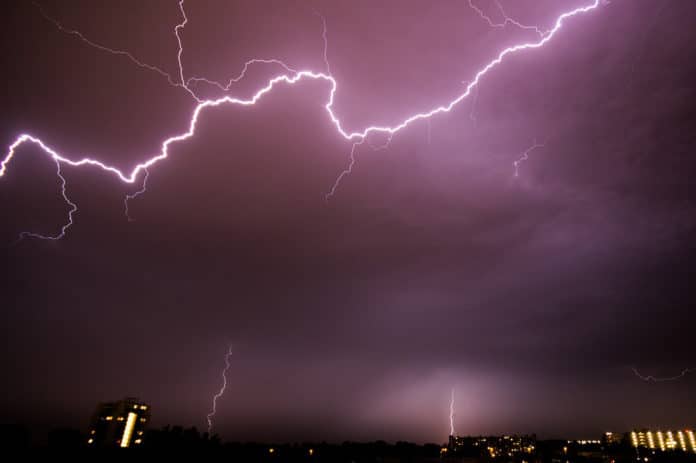Almost four billion years ago, meteorites delivered minerals to Earth. Those minerals are assumed to be the critical ingredients for the development of life on our planet. Scientists also think that minimal amounts of these minerals were also coming from lightning strikes.
A new study by the University of Leeds has now established that lightning strikes played a vital role in life’s origins on Earth. They suggest that lightning strikes were just as significant as meteorites in performing this essential function and allowing life to manifest.
According to scientists, life could develop on Earth-like planets through the exact mechanism at any time if atmospheric conditions are right.
Scientists were studying a pristine sample of fulgurite. Fulgurite is a rock sample that forms when lightning discharges into the ground. The sample was formed when lightning struck a property in Glen Ellyn, Illinois, USA, in 2016 and donated to the geology department at Wheaton College nearby.
Scientists were surprised after discovering a highly unusual phosphorus mineral called schreibersite in the Glen Ellyn sample.
Phosphorus is essential to life and plays a vital role in all life processes, from movement to growth and reproduction. The phosphorus present on early Earth’s surface was contained in minerals that cannot dissolve in water, but schreibersite can.
Benjamin Hess, a Ph.D. student at Yale University, Connecticut, USA, said, “Many have suggested that life on Earth originated in shallow surface waters, following Darwin’s famous “warm little pond” concept.”
“Most models for how life may have formed on Earth’s surface invoke meteorites which carry small amounts of schreibersite. Our work finds a relatively large amount of schreibersite in the studied fulgurite.”
“Lightning strikes Earth frequently, implying that the phosphorus needed for the origin of life on Earth’s surface does not rely solely on meteorite hits.”
“Perhaps, more importantly, this also means that the formation of life on other Earth-like planets remains possible long after meteorite impacts have become rare.”
Phosphorus minerals made by lightning strikes outperformed those from meteorites when the Earth was around 3.5 billion years old, which is about the age of the earliest known fossils, making lightning strikes critical in the emergence of life planet. What’s more, lightning strikes are far less destructive than meteor hits. It means they are less likely to interfere with the delicate evolutionary pathways in which life could develop.
Dr. Jason Harvey, Associate Professor of Geochemistry in Leeds’ School of Earth and Environment, said, “The early bombardment is a once in a solar system event. As planets reach their mass, the delivery of more phosphorus from meteors becomes negligible. Lightning, on the other hand, is not such a one-off event. If atmospheric conditions are favorable for the generation of lightning, elements essential to the formation of life can be delivered to the surface of a planet.”
“This could mean that life could emerge on Earth-like planets at any point in time.”
Sandra Piazolo, Professor of Structural Geology and Tectonics in the School of Earth and Environment, said, “Our exciting research opens the door to several future avenues of investigation, including the search for an in-depth analysis of fresh fulgurite in Early Earth-like environment; in-depth analysis of the effect of flash heating on other minerals to recognize such features in the rock record, and further analysis of this exceptionally well-preserved fulgurite to identify the range of physical and chemical processes within.”
“All these studies will help up to increase our understanding of the importance of fulgurite in changing the chemical environment of Earth through time.”
Journal Reference:
- Benjamin L. Hess, Sandra Piazolo, Jason Harvey. Lightning strikes as a major facilitator of prebiotic phosphorus reduction on early Earth. Nature Communications, 2021; 12 (1) DOI: 10.1038/s41467-021-21849-2
